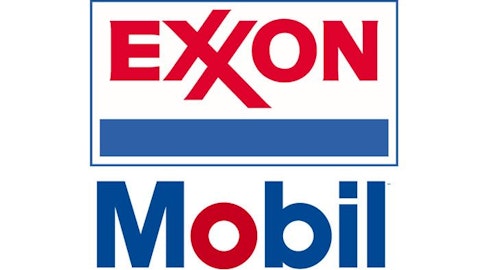Back in April, BP plc (ADR) (NYSE:BP) announced that it was putting its U.S. wind power assets up for sale, in an effort to focus on its more profitable oil and gas operations. But the British oil giant has since reversed course on that decision. Does this mean that BP plc (ADR) (NYSE:BP) is changing its mind about investing in renewable energies?
Why BP changed its mind
Not really. BP plc (ADR) (NYSE:BP)’s decision to hold on to its U.S. wind assets for now mainly reflects the fact that the company failed to receive an attractive bid. “We didn’t find an offer that we thought was the right value,” said a BP plc (ADR) (NYSE:BP) spokesman. “Our feeling is that the business is more valuable to us than to others. We had a number of bids, but we decided now is not the right time to sell.”
Instead, the company will focus on maximizing the wind farm’s operational and finance performance. BP plc (ADR) (NYSE:BP) previously estimated that the assets, which include 16 wind farms across nine states with a combined generating capacity of around 2,600 megawatts, were worth $1.5 billion.
The fact that BP plc (ADR) (NYSE:BP) was unable to attract a bid it thought was fair is not surprising; values for wind farms have generally been on the decline this year, as demand for alternative energy assets from major oil companies has fallen considerably.
Oil majors getting hesitant on alternative energy
Most oil majors are more focused on their oil and gas operations, which provide immediate returns to sustain their massive exploration and production programs, unlike investments in alternative energies, whose payoffs are longer-term in nature. Not surprisingly, BP and several other oil majors have either scaled back or shelved investment in wind power and other renewable energy sources.
For instance, Royal Dutch Shell plc (ADR) (NYSE:RDS-A) recently threw in the towel on a major wind project that it had pursued for eight years and plowed millions of dollars into. Because of “unfavorable market conditions” and issues related to “transportation logistics,” the Anglo-Dutch giant finally decided to pull the plug on its proposed wind turbine project in Humboldt County, Calif., in July of last year.
Other major integrated oil companies that have encountered difficulty in developing alternative energy sources include Chevron Corporation (NYSE:CVX) and Exxon Mobil Corporation (NYSE:XOM). Chevron Corporation (NYSE:CVX) scrapped much of its biofuels research in 2010 after it determined that the 100 biofuels feedstocks it studied wouldn’t be able to generate sufficient returns, while Exxon Mobil Corporation (NYSE:XOM), which shelled out more than $100 million over the course of nearly four years into developing biofuels from algae, recently said it is still more than two decades away from commercial success.
Is BP going “Back to Petroleum”?
BP, which adopted the slogan “Beyond Petroleum” to reflect its determination to expand beyond its core oil and gas business, also seems to have given up on alternative energy projects in recent years. The company’s CEO, Bob Dudley, recently stated that BP has scrapped its solar ambitions after three decades of disappointing results.
The company also appears to have give up on developing carbon capture and storage technology, after calling it quits on a $500 million plant in Scotland back in 2007. It also ditched plans to build a cellulosic biofuel plant in Florida, a facility that would have converted biological materials, such as wood, grasses, and plants, into ethanol.
The bottom line
Though BP maintains that these decisions don’t reflect a departure from its push into alternative energies, the company’s recent moves tell a different story. In fact, BP’s last remaining relic from its prior push into alternative energy is its biofuels production business in Brazil. To me, it certainly appears that BP is returning to what it knows best — drilling oil and gas wells.
Over the next decade, the company plans to direct as much as 75%-80% of its capital budget toward its upstream business, specifically in Angola, Azerbaijan, the North Sea, and the U.S. Gulf of Mexico — its four core growth areas. Since BP expects these four regions to generate approximately half of its operating income by 2020, investors would do well to carefully monitor the company’s successes or failures in these projects.
The article Is BP Changing Its Mind About Renewable Energy? originally appeared on Fool.com is written by Arjun Sreekumar.
Fool contributor Arjun Sreekumar has no position in any stocks mentioned. The Motley Fool recommends Chevron.
Copyright © 1995 – 2013 The Motley Fool, LLC. All rights reserved. The Motley Fool has a disclosure policy.




